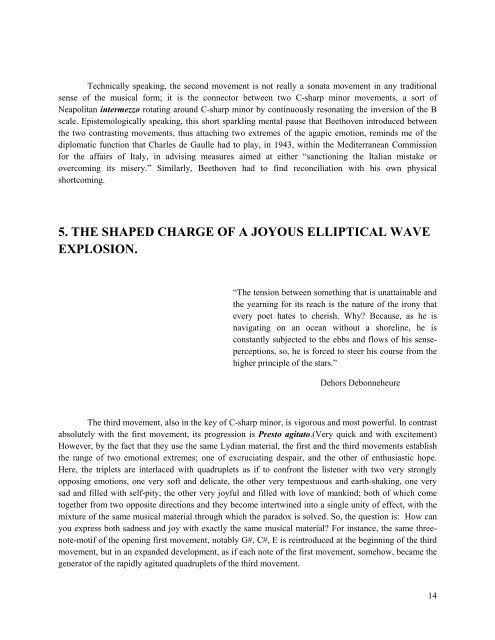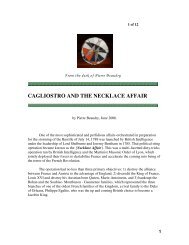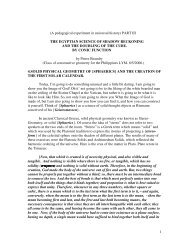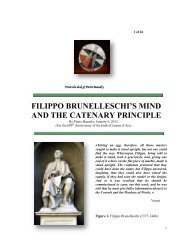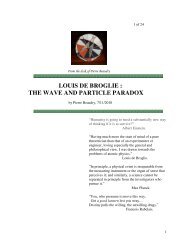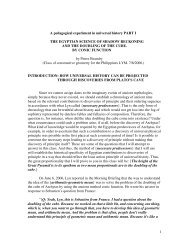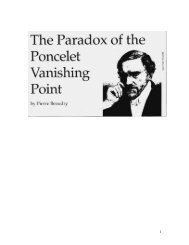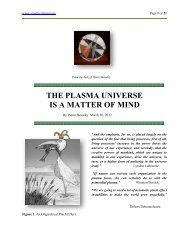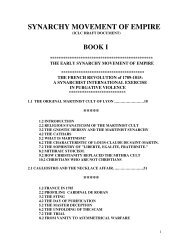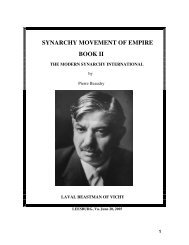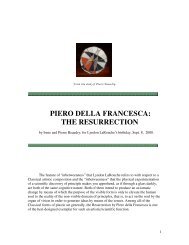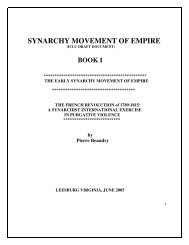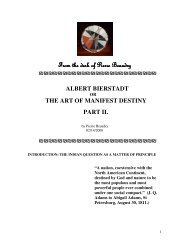BEETHOVEN SONATA OPUS 27, NO. 2.pdf - Pierre Beaudry's ...
BEETHOVEN SONATA OPUS 27, NO. 2.pdf - Pierre Beaudry's ...
BEETHOVEN SONATA OPUS 27, NO. 2.pdf - Pierre Beaudry's ...
You also want an ePaper? Increase the reach of your titles
YUMPU automatically turns print PDFs into web optimized ePapers that Google loves.
Technically speaking, the second movement is not really a sonata movement in any traditional<br />
sense of the musical form; it is the connector between two C-sharp minor movements, a sort of<br />
Neapolitan intermezzo rotating around C-sharp minor by continuously resonating the inversion of the B<br />
scale. Epistemologically speaking, this short sparkling mental pause that Beethoven introduced between<br />
the two contrasting movements, thus attaching two extremes of the agapic emotion, reminds me of the<br />
diplomatic function that Charles de Gaulle had to play, in 1943, within the Mediterranean Commission<br />
for the affairs of Italy, in advising measures aimed at either “sanctioning the Italian mistake or<br />
overcoming its misery.” Similarly, Beethoven had to find reconciliation with his own physical<br />
shortcoming.<br />
5. THE SHAPED CHARGE OF A JOYOUS ELLIPTICAL WAVE<br />
EXPLOSION.<br />
“The tension between something that is unattainable and<br />
the yearning for its reach is the nature of the irony that<br />
every poet hates to cherish. Why? Because, as he is<br />
navigating on an ocean without a shoreline, he is<br />
constantly subjected to the ebbs and flows of his senseperceptions,<br />
so, he is forced to steer his course from the<br />
higher principle of the stars.”<br />
Dehors Debonneheure<br />
The third movement, also in the key of C-sharp minor, is vigorous and most powerful. In contrast<br />
absolutely with the first movement, its progression is Presto agitato.(Very quick and with excitement)<br />
However, by the fact that they use the same Lydian material, the first and the third movements establish<br />
the range of two emotional extremes; one of excruciating despair, and the other of enthusiastic hope.<br />
Here, the triplets are interlaced with quadruplets as if to confront the listener with two very strongly<br />
opposing emotions, one very soft and delicate, the other very tempestuous and earth-shaking, one very<br />
sad and filled with self-pity, the other very joyful and filled with love of mankind; both of which come<br />
together from two opposite directions and they become intertwined into a single unity of effect, with the<br />
mixture of the same musical material through which the paradox is solved. So, the question is: How can<br />
you express both sadness and joy with exactly the same musical material? For instance, the same threenote-motif<br />
of the opening first movement, notably G#, C#, E is reintroduced at the beginning of the third<br />
movement, but in an expanded development, as if each note of the first movement, somehow, became the<br />
generator of the rapidly agitated quadruplets of the third movement.<br />
14


